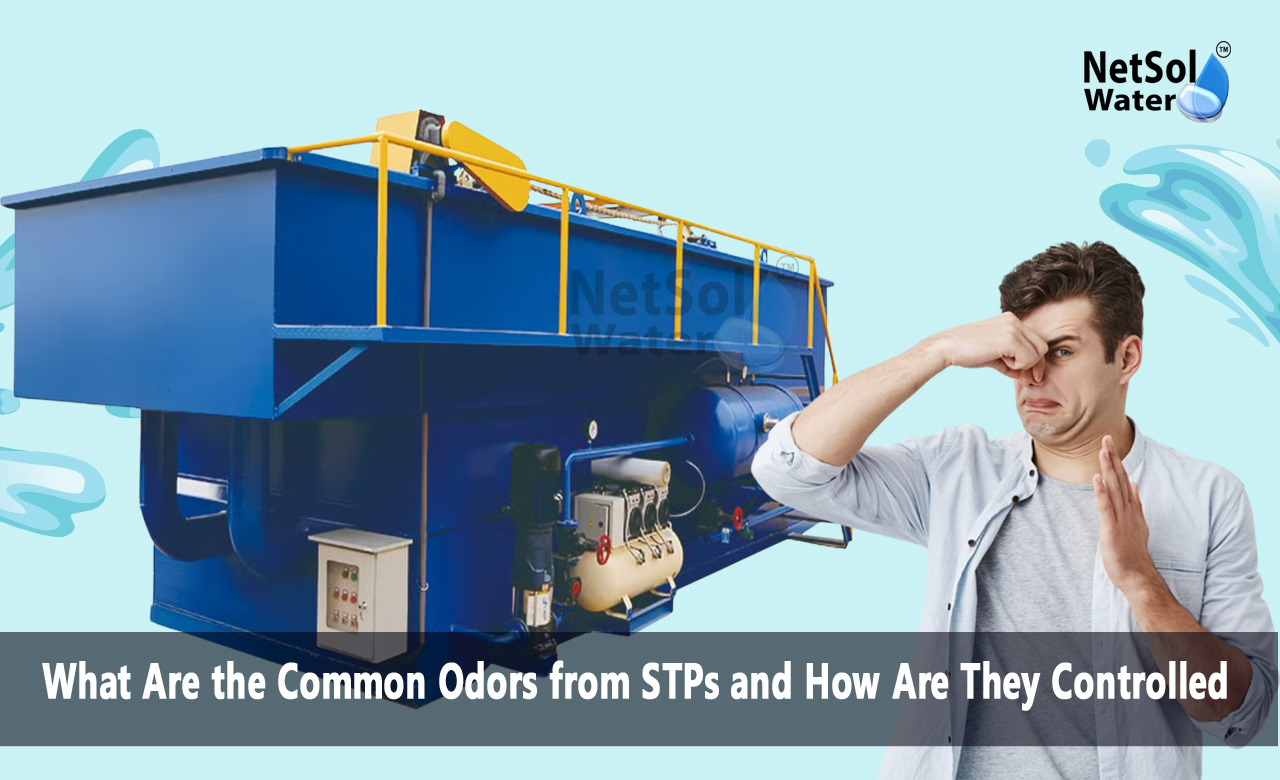What Are the Common Odors from STPs and How Are They Controlled?
Sewage treatment plants clean wastewater and protect our environment. They process water from homes and businesses and then return it safely to rivers and seas. During this treatment, certain gases form and spread around the site. These gases can create strong odours from STPs. Such smells can upset nearby residents and harm a facility’s reputation. They may also irritate workers and local wildlife.
Understanding these odours from STPs helps plant managers handle them well. Netsol Water leads the industry in designing treatment systems that keep smells under control. The company applies proven techniques that capture gases before they escape into the air. This approach prevents complaints and makes life better for neighbours
Common Odours in STPs
Operators must first identify each gas to manage odours effectively. Detailed knowledge of odours lets teams choose the right solution. Let us have a look at some frequent gases that cause smells in treatment plants.
Hydrogen Sulfide
Hydrogen sulfide gives a rotten egg smell. It appears when bacteria break down sulfur in sewage. This gas often forms in sludge tanks with little air. High levels can harm health and corrode pipes and equipment.
Ammonia
Ammonia emits a sharp, pungent scent. It forms during nitrogen breakdown in wastewater. Aeration basins and sludge digesters release this gas into the air. Even low concentrations can irritate eyes and the respiratory system.
Volatile Organic Compounds
Volatile organic compounds produce a sweet or chemical odour. They come from oils, greases, and cleaning agents that flow into sewers. These compounds evaporate in open channels and tanks. Some of them pose health risks and add air pollution.
Read: Sewage Treatment Plant Manufacturer
How Odours Are Controlled in STPs?
Treating odours from STPs protects workers and neighbours. Plant teams use several methods to cut down on these gases. Let us have a look at some key control strategies.
Aeration and Mixing
Aeration pumps air into wastewater and sludge. This process raises oxygen levels throughout the tank. It stops zones where odour?forming bacteria thrive. Mixing keeps liquid in motion. It prevents gases from building up in any one area.
Chemical Scrubbing
Chemical scrubbers push odorous air through a liquid solution. This solution absorbs or transforms harmful gases. Plants often use a basic solution to convert hydrogen sulfide into a harmless compound. The system runs in a closed loop so no gas escapes.
Biofilters
Biofilters move odorous air through a bed of organic material. Microbes in the media feed on odour molecules. As air passes, bacteria break down ammonia and organic compounds. Operators must keep the filter moist and replace the media when it degrades.
Covering and Ventilation
Covers seal tanks and channels to trap gases. Operators then direct the captured air to scrubbers or biofilters. Open covers with fans also dilute odours with fresh air. This method works best when it combines with other controls.
Conclusion
Odours from STPs pose health risks and disturb neighbours. Netsol Water leads the market in crafting systems that manage these emissions. The company offers custom solutions that fit each plant’s size and rules. By using aeration, scrubbing, biofilters, and covers, operators can cut smells and keep communities content. To learn more about handling odours from STPs or to request a consultation please contact Netsol Water. Our experts will guide you to the ideal solution for your treatment plant.
Contact Netsol Water at:
Phone: +91-9650608473, Email: enquiry@netsolwater.com



